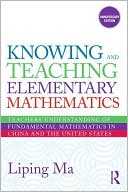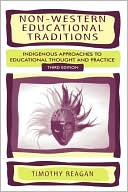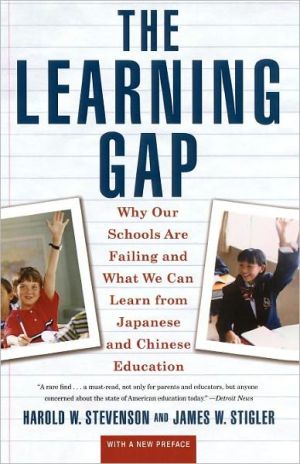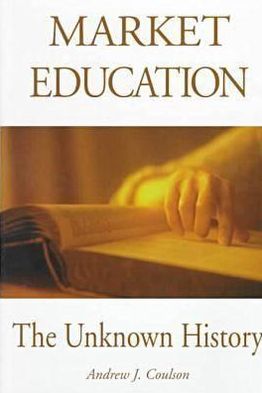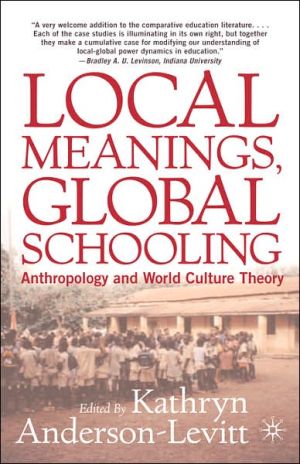History Lessons: How Textbooks from Around the World Portray U.S. History
"The American invaders...accompanied by their puppets, finally waged the war...The bastards who crossed the 38th parallel at dawn were stoking the flames of war, jumping around like mad men, yearning to invade the North." —North Korean textbook on the Korean War\ History Lessons offers a lighthearted and fascinating challenge to the biases we bring to our understanding of American history. The subject of widespread attention when it was first published in 2004—including a full front-page...
Search in google:
The widely contrasting approaches to U.S. history that can be found in the textbooks of other nations. The New York Times - Daniel Swift These may be conspiracy theories, or they may hold some traces of truth. But either way, neither History Lessons nor the United States can afford to dismiss the ways the rest of the world sees America, and how America is represented to young people in schools.
Pt. IThe new world and a new American nation1Viking exploration : Norway, Canada32Columbus : Cuba, Caribbean63British exploration : Great Britain, Canada134Puritans : Great Britain175French and Indian War : Great Britain, Caribbean, Canada216Government in colonial America : Great Britain297The American Revolution : Great Britain, France, Canada, Caribbean, Germany33Pt. IIWestward expansion8The War of 1812 : Great Britain, Canada, Caribbean519The Monroe Doctrine : Great Britain, Brazil, Caribbean, Mexico, France5710Manifest destiny : Canada, Mexico, Brazil6511Texas and the Mexican-American wars : Mexico7212Slavery : Nigeria, Zimbabwe, Portugal, Great Britain, Mexico7913The Civil War : Canada, Great Britain, Mexico9214Immigration : Japan, Canada, Norway, Ireland, Italy101Pt. IIIA world power15Opening of Japan : Japan10916The Spanish-American War : Spain, Philippines, Cuba, Caribbean11117Philippine-American War : Philippines12318Boxer Rebellion : China (Hong Kong), Japan, Great Britain12719U.S. interventions in Latin America and the Caribbean : Brazil, Costa Rica, Cuba, Nicaragua, Caribbean133Pt. IVWorld War I20Causes of World War I : France, Germany, Italy, Great Britain14921The Great War : France, Canada, Great Britain, Italy, Germany15822Aftermath of the war : Germany, France, Nigeria, Great Britain16823Invasion of Russia : Japan, Great Britain17524The Treaty of Versailles : Germany, Japan, Great Britain, France, Russia, Italy177Pt. VThe Great Depression and World War II25The Great Depression : Russia, France, Caribbean19326World War II : Europe : Great Britain, Germany, Russia20227D-Day and the liberation of Europe : Great Britain, Canada, France, Italy21428Resistance : France, Italy, Germany22229World War II : Pacific theater : Philippines, Japan22830The atomic bomb : Japan, Philippines, Canada, Great Britain, Italy238Pt. VIThe Cold War31The origins of the Cold War : Canada, Russia, Great Britain24732The United Nations : Great Britain, Russia, Canada25633The Cuban revolution : Cuba26134Korean War : North Korea, South Korea, Great Britain, Russia, Canada, Japan26535NATO : Great Britain, Russia, Canada27836McCarthyism : Canada, France28137Suez Canal : Great Britain, France, Israel, Saudi Arabia28538The Cuban missile crisis : Cuba, Russia, Canada, Caribbean29739The Pueblo incident : North Korea30740The Vietnam War : France, Vietnam, Canada31041The end of the Cold War : France, Russia, Canada318Pt. VIIModern times42The hostage crisis in Iran : Iran32543Nicaragua in the 1980s : Nicaragua, Canada32944Apartheid : Zimbabwe33345Free trade : Canada, Mexico, Japan33646U.S.-Philippine relations : Philippines34247Cuban-American relations : Cuba34548The Middle East : Saudi Arabia, Great Britain, France, Israel, Syria34749Nuclear weapons in North Korea : North Korea37250A new world order : France376
\ Daniel SwiftThese may be conspiracy theories, or they may hold some traces of truth. But either way, neither History Lessons nor the United States can afford to dismiss the ways the rest of the world sees America, and how America is represented to young people in schools. \ — The New York Times\ \ \ \ \ Foreign AffairsLindaman and Ward had a brilliant idea: show Americans what the rest of the world teaches its children about U.S. history by excerpting history textbooks from around the world. Unfortunately, they weren't able to carry it out. They include what French history texts teach about the French resistance in World War II, for example. Interesting stuff, perhaps, and especially for those who, like Lindaman (as we learn from the jacket notes), focus on the formation of French identity in secondary-school textbooks. But this excerpt, like far too many others in this unwieldy and poorly edited morass of a book, tells us exactly nothing about what the French learn about the United States. We can learn here what the British, Italians, Germans, and French are taught about the outbreak of World War I, or how the British describe the partition of Palestine, and we can read many other little snippets of information. Overall, the book leans too heavily on a handful of countries, and fails too signally to focus on what others are teaching and learning about the United States to serve any useful purpose.\ \ \ Library JournalTextbooks are political documents, commissioned methods for molding students' viewpoints as well as instruments for conveying essential facts. By compiling excerpts of secondary-school manuals from largely Anglophone although not exclusively European sources, Ward (history, Vincennes Univ.) and Lindaman (a doctoral candidate at Harvard) provide a valuable service for those largely familiar with U.S. texts only. The use of post-Soviet Russian sources as well as Cuban and North Korean works is especially revealing. After an introduction delineating national differences among foreign publishers and the caveat that "most languages have passive constructions that allow them to speak of something without assigning blame," the authors submit selected historical passages ranging chronologically from the European discovery of the "New World" to the post-Cold War era. The book clearly shows that the United States developed within a global context and that U.S. history was especially intricately intertwined with that of its hemispheric neighbors. That said, there are few new insights for most well-read historians. All the texts assessed are from 1988 through 2001, which necessarily sets this work in time; it would be enlightening to see a similar study done ten years hence. Recommended for public libraries and teachers' college collections.-Frederick J. Augustyn Jr., Library of Congress Copyright 2004 Reed Business Information.\ \


